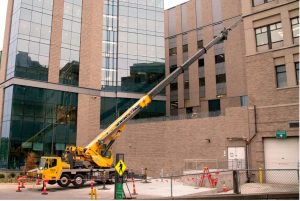What Does It Take To Design Distribution Centers and Warehouses?

Designing distribution centers or warehouses require utmost care and commitment. Without these, the structure may fail to be up to the mark. A distribution center is a specialized hub that deals with the storage and shipment of goods. It’s where an inventory gets stored and order fulfillment gets dealt with and it’s where the distribution of stock gets managed in an organization.
Distribution centers differ from warehouses in several aspects such as their time and storage. They are quite dynamic as opposed to warehouses that are semi-permanent. Designing both the spaces, nevertheless, is not an easy task for the architects and we shall delve into a few basic principles of designing distribution centers.
- Determining the objective
An effective distribution center design will require acknowledging certain significant questions such as
- What is the space for?
- What market is it going to serve?
- Anticipated life of the facility?
- Types of goods to be stored here?
By acknowledging these questions, the architect may be able to design a facility that actually accents the demands of your business.
- Determining the volumes and the functional requirements
Before designing a warehouse of a distribution center, one needs to understand certain things such as the quantity of the products to be stored at the facility, inter-facility transfers, and the nature of orders. Here, getting a hold of these facts may seem easy, but once you go through the process, you will understand that the architects involved with the construction and design need to extract the information from the enterprise so as to meet their needs exactly. There are also cases when the data is unavailable. In such situations, the architects use their experiences to fulfill the goals. An experienced architect is therefore required for such projects.
- The flow
Here, one major rule to be abided by is that free movement has a significant advantage over storage capacity. This is because after the design of the distribution center is over, several teams have to work efficiently and comfortably in these spaces. And if the architectural design compromises on the size of the aisles for the sake of more storage capacity, the performance is straightaway affected. Therefore, it is the responsibility of the architect to design and ensure a well-structured and organized distribution center.
The essence of designing a distribution center or a warehouse lies in the aforementioned principles. These principles may be used by the architects to design appropriate models for spaces. Stendel Reich architecte center de distribution promises well-built distribution centers, serving the contemporary needs of today’s businesses.








